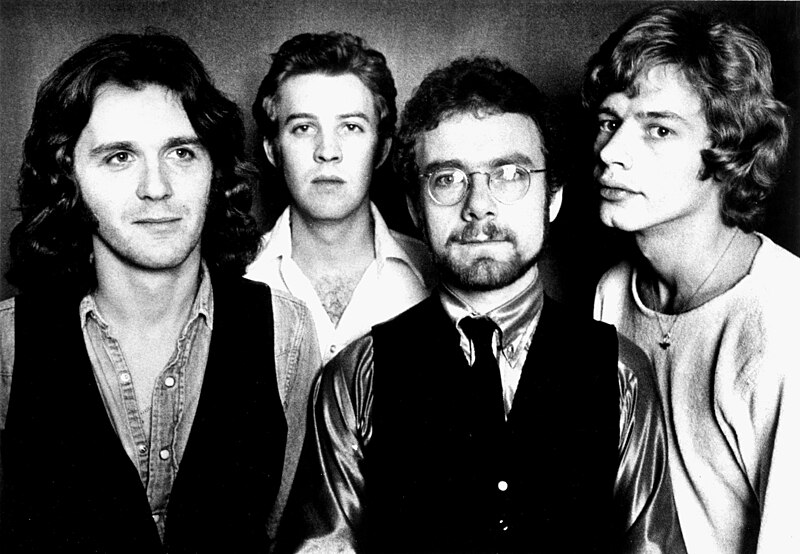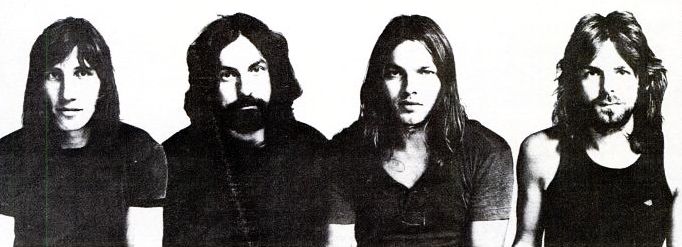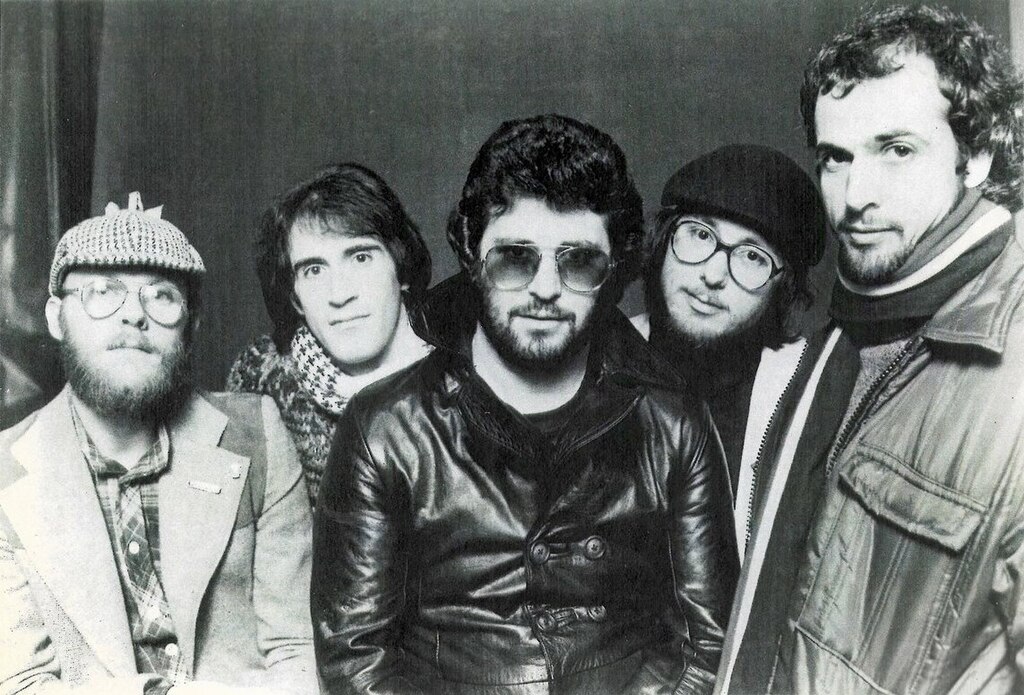The 1970s were a transformative period for British progressive rock, marked by a creative explosion that challenged traditional music boundaries. Prog rock bands from this era experimented with complex compositions, blending elements of classical, jazz, folk, and psychedelic rock. They pushed the limits of what rock music could be, producing epic, multi-part songs that often told elaborate stories.
Why were these 70s British progressive rock bands so influential? Their groundbreaking approach not only redefined the genre but also set the stage for future musical experimentation. By embracing innovative song structures and a diverse range of influences, these bands carved out a unique place in music history, leaving a lasting legacy that continues to inspire musicians and fans alike.
1) King Crimson

King Crimson is pivotal in the world of progressive rock. Formed in London in 1968, they are known for their adventurous and complex music.
Their debut album, “In the Court of the Crimson King,” released in 1969, is often hailed as one of the most influential in the genre. It set a new standard for progressive rock with its intricate arrangements and dramatic tone.
Robert Fripp is the only constant member throughout the band’s history. He is considered the driving force behind their unique sound. King Crimson’s music often mixes rock, jazz, and classical influences.
Despite numerous lineup changes and several hiatuses, the band released 13 studio albums. Their innovative approach has kept them relevant for decades and influenced many contemporary artists.
King Crimson’s willingness to explore new musical territories has made them a key player in progressive rock.
2) Yes

Yes is an English progressive rock band formed in London in 1968. The original members were lead singer Jon Anderson, bassist Chris Squire, guitarist Peter Banks, keyboardist Tony Kaye, and drummer Bill Bruford.
The band has seen many lineup changes over the years, with 20 musicians being full-time members at different points. Despite these changes, Yes has remained influential in the prog-rock genre.
The “classic” lineup included Jon Anderson, Chris Squire, Steve Howe, Rick Wakeman, and Bill Bruford. This lineup produced iconic albums such as Fragile (1971) and Close to the Edge (1972).
In 1972, Bill Bruford left to join King Crimson. His departure marked a significant shift, yet the band continued to produce groundbreaking music. The current lineup, as of February 2023, includes guitarist Steve Howe and keyboardist Geoff Downes.
Yes is renowned for their complex compositions, blending rock, classical, and electronic elements. Their music often features extended compositions and intricate arrangements. Songs like “Roundabout” and “Starship Trooper” showcase their technical skill and creativity.
Yes has not just survived but thrived through decades, adapting and evolving their sound. They remain a vital force in progressive rock, continually influencing new generations of musicians and fans.
3) Genesis

Genesis, formed in 1967 at Charterhouse School in Godalming, Surrey, is a key name in British progressive rock.
The band’s classic lineup included Tony Banks, Mike Rutherford, Phil Collins, Peter Gabriel, and Steve Hackett. Genesis started as a progressive rock band with complex song structures and theatrical live shows, especially in the early 1970s.
Peter Gabriel, the original lead singer, was known for his dramatic stage presence and inventive costumes. This added a unique visual element to Genesis’s concerts. Key albums from this era include “Foxtrot,” “Selling England by the Pound,” and “The Lamb Lies Down on Broadway.”
After Gabriel left in 1975, Phil Collins took over vocals, and the band’s sound evolved. They started producing more radio-friendly hits while still retaining their progressive roots. Albums like “A Trick of the Tail” and “Wind and Wuthering” were part of this transition.
Steve Hackett also left the band after the album “Wind and Wuthering.” The group then moved towards a more mainstream rock sound in the 1980s, which brought them even greater commercial success with hits like “Invisible Touch.”
Genesis’s blend of inventive music, theatrical performances, and later, mainstream appeal, makes them a pivotal band in the history of British progressive rock.
4) Pink Floyd

Pink Floyd, an iconic band from London, formed in 1965. They stood out with their unique blend of extended compositions and sonic experimentation. Early on, they were known for their psychedelic rock influences. Over time, they evolved into progressive rock pioneers.
The band’s lineup included Syd Barrett, Nick Mason, Roger Waters, and Richard Wright. Barrett’s departure due to mental health issues led to David Gilmour joining. This lineup became the foundation for their most successful works.
The Dark Side of the Moon, released in 1973, is one of their most famous albums. It features themes of conflict, greed, and mental illness. Its success is evident by its long-standing presence on the Billboard charts and tremendous sales.
Wish You Were Here, another significant album, was released in 1975. It was dedicated to Syd Barrett and explored themes of absence and the music industry. The track “Wish You Were Here” became one of their most beloved songs.
Pink Floyd’s live shows were known for their elaborate stage designs, light shows, and visual effects. Their innovative approach to music and performance left a lasting impact on the genre. Their contributions to progressive rock continue to influence musicians and fans alike.
5) Emerson, Lake & Palmer

Emerson, Lake & Palmer, often abbreviated as ELP, were a key force in the progressive rock movement of the 1970s. Formed in London in 1970, the band consisted of Keith Emerson on keyboards, Greg Lake on vocals and bass, and Carl Palmer on drums.
The trio was known for their technical proficiency and ambitious compositions. Their music often combined classical music influences with rock, creating a unique sound that set them apart from other bands. They are celebrated for their use of the Moog synthesizer, an innovative new instrument at the time.
Their debut album, “Emerson, Lake & Palmer,” released in 1970, featured the hit “Lucky Man,” which remains one of their most popular songs. Another noteworthy album is “Tarkus,” released in 1971. This album includes the ambitious title track, a seven-part suite that showcases their instrumental skills.
In addition to their studio work, ELP was famous for their elaborate live shows. They often included complex lighting, pyrotechnics, and elaborate stage setups, enhancing the concert experience. These performances helped cement their reputation as one of the most exciting live acts of the era.
The band achieved significant commercial success with nine gold albums in the United States and an estimated 48 million records sold worldwide. Despite disbanding in 1979, they reunited several times for tours and new recordings.
Emerson, Lake & Palmer’s contribution to progressive rock remains influential. Their unique blend of classical music elements with rock continues to inspire musicians today.
6) The Alan Parsons Project
The Alan Parsons Project was a British progressive rock band that formed in 1975. The core members were Alan Parsons, a producer, audio engineer, and musician, and Eric Woolfson, a songwriter, pianist, and singer.
The band was known for its complex compositions and rich soundscapes. They combined rock with orchestral arrangements, making their music stand out.
They released 10 concept albums from 1976 to 1987. Some of their most popular albums include “Eye in the Sky” and “The Turn of a Friendly Card.”
Alan Parsons, who had worked on famous albums such as Pink Floyd’s “The Dark Side of the Moon,” brought his production expertise to the band. Eric Woolfson’s songwriting and keyboard skills added depth to their music.
The band also featured various session musicians. Notable contributions included guitarist Ian Bairnson and saxophonist Mel Collins. The collaborations enriched the band’s sound.
Their music has been featured in films, TV shows, and commercials. This helped them maintain a lasting presence in popular culture.
The band was a unique mix of rock with a progressive edge, known for their polished production and cohesive album themes. Their innovative approach and memorable melodies make them a key band in the progressive rock genre.
7) Gentle Giant

Gentle Giant, a British progressive rock band, was active from 1970 to 1980. Despite not achieving widespread commercial success, they gained a loyal cult following. The band’s music stood out for its complexity and sophistication.
Each member of Gentle Giant was a multi-instrumentalist. Their unique sound combined elements of classical, medieval, jazz, and rock music. This blend made their compositions intricate and engaging.
The band’s official live album, Playing the Fool, showcases their talent in a live setting. Their final studio album, Civilian, marked a shift towards a lighter rock and pop direction.
Tracks like “Acquiring the Taste” highlight their adventurous approach to music-making. Gentle Giant’s dedication to exploring new musical territories set them apart in the progressive rock scene.
8) Van der Graaf Generator
Van der Graaf Generator formed in 1967 in Manchester. The band was created by Peter Hammill and Chris Judge Smith. Their music stands out due to its complex and challenging nature.
They gained popularity in Italy during the 1970s. Although they didn’t achieve much commercial success in the UK, their influence in the progressive rock scene remains significant.
Their first album, “The Aerosol Grey Machine,” was released in 1969. The band became known for their unique sound and intense live performances. They even opened for Jimi Hendrix during their early years.
Van der Graaf Generator went through several splits and reunions. They were disbanded in 1978 but reformed in 2005. The current lineup still includes original member Peter Hammill.
Their music often explores dark themes and features complex arrangements. They continue to release new music and perform live. This dedication has secured their place among the greats of progressive rock.
9) Camel
Camel, an English progressive rock band, formed in 1971 in Guildford, Surrey. Led by guitarist Andrew Latimer, the band became known for their intricate melodies and complex song structures.
Their early albums, like “Mirage” (1974) and “The Snow Goose” (1975), won them a dedicated following. Both records exemplify their blend of rock with elements of jazz and classical music.
“I Can See Your House from Here” came out in 1979. It featured changes in the band’s lineup, with Colin Bass joining on bass and new members Jan Schelhaas and Kit Watkins.
Camel never reached mainstream success but maintained a loyal fanbase. They released fourteen studio albums, including notable works like “Moonmadness” (1976).
The group’s music often features instrumental tracks, showcasing their skill and creativity. They are considered one of the underrated gems of the 1970s progressive rock scene.
10) Soft Machine

Soft Machine, formed in 1966 in Canterbury, England, is a key band in the progressive rock scene. The original lineup included Mike Ratledge, Robert Wyatt, Kevin Ayers, and Daevid Allen. They started as a psychedelic rock group, showcasing imaginative and experimental sounds.
Over the years, Soft Machine evolved, incorporating more jazz influences into their music. By 1971, they had transitioned to a purely instrumental band. This shift marked their movement into jazz rock and progressive rock, blending complex rhythms and improvisations.
Their third album, “Third,” released in 1970, is often regarded as a standout in their discography. It consists of lengthy tracks that push the boundaries of rock and jazz. The band’s willingness to experiment helped them earn a dedicated following.
Throughout the years, Soft Machine saw many lineup changes. Despite this, they remained influential, contributing significantly to the Canterbury scene, an area known for its innovative musical acts. Their blend of jazz fusion with rock elements set them apart from many of their peers.
Even after disbanding in the mid-1980s, Soft Machine’s legacy continued. Many later bands and musicians cited them as an inspiration. Although not achieving massive commercial success, their impact on progressive and jazz rock genres is undeniable.
Cultural Impact of 70s British Progressive Rock
British progressive rock of the 1970s played a significant role in shaping modern music and influenced the development of various genres. It also introduced a new level of musical complexity and innovation.
Influence on Modern Music
Progressive rock from the 70s has left a lasting imprint on modern music. Bands like Yes, Genesis, and Pink Floyd pushed musical boundaries, combining rock with classical, jazz, and folk elements.
This blending of styles paved the way for modern bands to experiment more freely. Bands in genres like metal, alternative, and even pop draw from the intricate compositions and thematic concepts pioneered by these progressive rock bands.
Modern progressive metal bands like Dream Theater and Opeth owe a lot to the 70s pioneers. The use of complex time signatures, extended instrumental sections, and album-oriented storytelling in modern music can be traced back to the influence of 70s British progressive rock.
Evolution of the Genre
The genre itself has evolved significantly since its heyday in the 70s. Originally characterized by long compositions, conceptual albums, and a high degree of technical skill, progressive rock set the stage for various subgenres.
The initial wave of British progressive rock bands laid the foundation for neo-progressive rock in the 80s. Bands like Marillion and IQ continued the tradition, though they introduced more streamlined and accessible elements.
In recent decades, progressive rock has diversified further. Subgenres like progressive metal, represented by bands like Tool, and post-progressive acts like Porcupine Tree, show how the genre has built upon its original roots while continuing to innovate and evolve.
Key Albums and Tracks
British progressive rock bands from the 70s released numerous influential albums and tracks. Some of these records became critically acclaimed, while others remain hidden gems appreciated by dedicated fans.
Critically Acclaimed Works
Yes‘s Close to the Edge (1972) is often considered a masterpiece. Featuring the lengthy title track, it showcases the band’s ability to blend complex musical themes with lyrical depth. Tracks like “And You and I” and “Siberian Khatru” are also fan favorites.
Pink Floyd’s The Dark Side of the Moon (1973) can’t be overlooked. It’s praised for its conceptual depth and production, with signature songs like “Time” and “Money” solidifying their place in rock history.
Genesis‘s Selling England by the Pound (1973) is another crucial album. Songs like “Firth of Fifth” and “The Cinema Show” highlight their sophisticated compositions and storytelling abilities.
Hidden Gems
Gentle Giant‘s Octopus (1972) may not have mainstream fame, but it’s highly respected among prog rock enthusiasts. Tracks like “Knots” and “Raconteur Troubadour” display their unique, intricate style and musicianship.
Caravan’s In the Land of Grey and Pink (1971) is often overshadowed by more famous albums, but it’s essential listening for its whimsical lyrics and blend of prog and jazz influences. The title track and “Golf Girl” demonstrate their playful yet complex approach.
Van Der Graaf Generator’s Pawn Hearts (1971) is another underappreciated gem. With epic tracks like “A Plague of Lighthouse Keepers,” it exemplifies their darker, more avant-garde take on progressive rock.
These albums and tracks represent both the well-known and the more niche contributions to the progressive rock genre from 70s British bands.
Iconic Band Lineups
The 1970s British progressive rock scene boasted some of the most talented musicians and saw significant lineup changes that heavily influenced the sound and direction of each band.
Notable Musicians
Genesis: Starting with Peter Gabriel’s unique vocals and stage presence, Genesis also featured Tony Banks on keyboards and Mike Rutherford on bass. Phil Collins, initially the drummer, later became the lead vocalist.
Pink Floyd: Known for its classic lineup of Roger Waters on bass and vocals, David Gilmour on guitar and vocals, Richard Wright on keyboards, and Nick Mason on drums. Syd Barrett, an original member, left early but had a lasting influence.
Yes: This band was notable for its members’ technical proficiency. Jon Anderson provided distinctive vocals, Steve Howe played guitar, Chris Squire was on bass, Rick Wakeman on keyboards, and Bill Bruford on drums.
King Crimson: Robert Fripp on guitar was a constant figure. The lineup frequently changed but included notable musicians like Greg Lake on bass and vocals and Bill Bruford on drums after he left Yes.
Key Changes Over Time
Genesis saw Peter Gabriel depart in 1975 and Phil Collins step up from drummer to lead vocalist. This shift marked a change in their musical approach, moving towards more mainstream rock.
In Pink Floyd, Syd Barrett’s departure in 1968 due to mental health issues led to David Gilmour joining. The band’s sound evolved significantly as a result.
Yes experienced multiple changes, with members like Steve Howe and Rick Wakeman coming and going. These shifts often brought fresh influences that kept their music innovative.
King Crimson was known for its rapidly changing lineup, with Robert Fripp being the only constant member. Each change brought new musical styles and experimentation, contributing to their eclectic sound.
